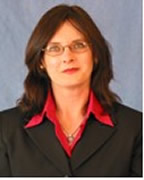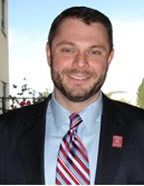Research: All Together Now
Collaborative Efforts, Educational Benefits Celebrated March 14
March 10, 2008
By Russ Hudson
Faculty members, research administrators and chief research officers from across the California State University and University of California systems, the National Science Foundation and NASA will gather on campus Friday to recognize the importance of research and all it can accomplish.
“In Celebration of Research: Strengthening CSU’s Research Partnerships and Collaborations,” will feature talks and group presentations, as well as a poster presentation, from 8 a.m. to 7:45 p.m. in the Titan Student Union. The event culminates with a concert in the university’s Performing Arts Center.
Sponsored by the CSUF Office of Grants and Contracts, the event is one of a series celebrating the university’s 50th anniversary.
The event goal, said Linda Patton, director of the Office of Grants and Contracts, “is to showcase the vast body of research and other scholarly activities being undertaken at our system institutions, and especially those involving research and other partnerships and collaborations.”
Among the focal areas to be shared: environmental sustainability, energy and water resources, agriculture, computer science, electrical engineering, teacher education, homeland security, life sciences, physical sciences, humanities, health sciences and technology transfer, as well as existing partnerships among CSU, UC and other institutions.
“The CSU remains committed, above all, to teaching and student learning. CSU faculty will always choose to come to our campuses because of this primary emphasis on working directly with students,” said keynote speaker Gary Reichard, CSU executive vice chancellor and chief academic officer, who will deliver the 1 p.m. address, “The Role of Research in the CSU: Reflections From the Past, Visions for the Future.”
“But research and creative activity have steadily become more important to the CSU’s instructional and public missions. Most of our faculty are very involved in research, scholarship and creative activity,” he said. “Much of this research is applied research, of direct value to the state’s economic, social and civic development, but all kinds of research are important to the CSU’s overall quality because faculty research and creative activity are increasingly done in collaboration with undergraduate and graduate students.
“More and more, faculty and student research in the CSU crosses traditional disciplinary boundaries and, increasingly, research networks and activities in this 23-campus system involve faculty and students from different campuses, as well as with the University of California, other colleges and universities and the private sector, ” Reichard added. “Strengthening research partnerships and collaborations is as important as anything else we can do to ensure that we are delivering on the full CSU mission of instruction and service to our state.”
Elizabeth Ambos, CSU assistant vice chancellor for research initiatives and partnerships, will address the “Role and Importance of Intra-System Research and Other Collaborations,” at 9:10 a.m.
“Student research is one of the forms of active learning that has been demonstrated by the National Survey of Student Engagement to increase student retention and student professional aspirations,” said Ambos. “Undergraduate research has been shown to be a significant factor in retention and success for students from underrepresented groups.”
“In the past two decades,” Ambos added, “the growth of CSU research and sponsored programs’ efforts has been significant and of tremendous value to the CSU, its students and the state of California. More than $500 million in grants and contracts are awarded each year across the CSU.”
“The faculty scholars of CSU Fullerton are part of a worldwide web of interdisciplinary and multidisciplinary collaborations,” said Lawrence B. Coleman, former UC vice provost for research. Coleman will speak at 9:35 a.m. on “The Value of Working Together: Why Modern Scholarship Demands Collaboration Between Scholars, Departments and Universities.”
“We know that learning is the most effective when the student is truly engaged, and nothing engages the student as much as being involved in research,” said Coleman, adding that much of today’s most exciting research is being carried out by collaborative teams.
“Teams made up of scholars from different disciplines and institutions come together because they realize that to answer the questions that interest them takes the tools and techniques of not only their discipline, but of others, as well,” Coleman said, noting that it is not just the physicists and chemists, it is also the sociologists, historians, and religious studies and literature scholars joining to conduct research.
“Strong collaborations also are being built between institutions as scholars seek colleagues who bring the needed expertise and experience, irrespective of where in the world they live and work.”
Other speakers include: Willie B. Williams, science specialist in the export control department in NASA’s International Space Station Payloads Office at the Johnson Space Center in Houston, at 10:15 a.m.; Cora B. Marrett, assistant director of NSF education and human resources, at 10:40 a.m.; and Michael Rondelli, San Diego State University Research Foundation program manager for technology transfer, at 1:30 p.m.
Ephraim Smith, vice president for academic affairs; Ray Young, associate vice president for graduate studies and research; and Patton will make introductory remarks.





